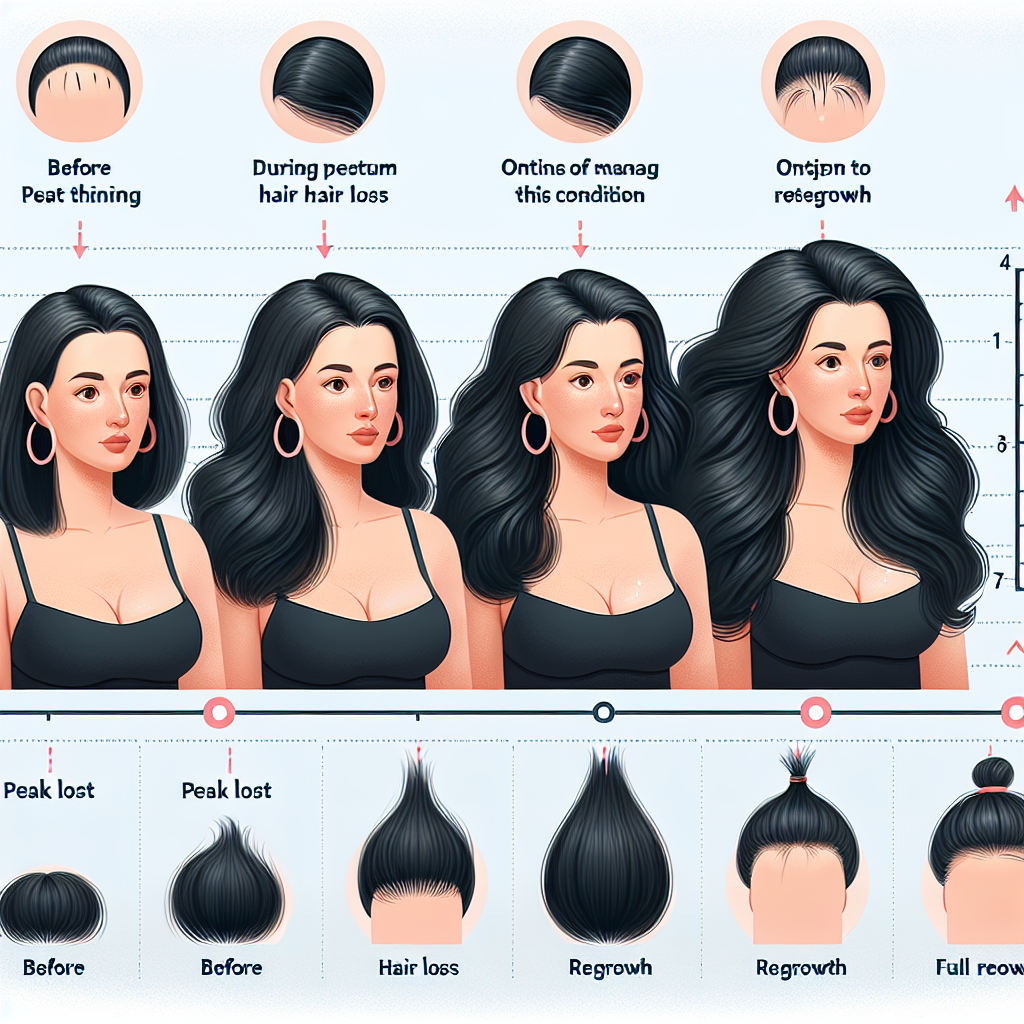Postpartum hair loss is common, but how long does it last? Learn about the timeline, causes, and tips for managing postpartum hair thinning and regrowth.
Postpartum hair loss, also known as postpartum alopecia, is a common experience for many women after childbirth. For those who enjoyed fuller, thicker hair during pregnancy, this sudden shedding can come as a shock. But just how long does postpartum hair loss last? Understanding the causes, the typical duration, and how to care for your hair during this period can help you navigate it with more ease.
This comprehensive guide will explore the reasons behind postpartum hair loss, the typical timeline for recovery, and what you can do to minimize its effects. We will also answer some frequently asked questions and provide expert advice on how to care for your hair as it returns to its pre-pregnancy state.
What Causes Postpartum Hair Loss?

1. Hormonal Changes: The Primary Cause
During pregnancy, elevated levels of estrogen prolong the growth phase of hair, leading to fuller, thicker hair. Estrogen helps prevent hair from shedding at its normal rate. After giving birth, hormone levels, including estrogen, drop significantly, causing a sudden shift in the hair growth cycle. This results in more hairs than usual entering the telogen phase, or resting phase, where hair naturally falls out.
- Why It Happens: Estrogen levels drop, causing more hair follicles to enter the shedding phase.
- When It Starts: Postpartum hair loss typically starts around 3 to 4 months after giving birth.
2. The Hair Growth Cycle Disruption
The hair growth cycle consists of three main phases: the anagen phase (growth), the catagen phase (transition), and the telogen phase (rest). Normally, about 5-10% of your hair is in the resting phase at any given time. However, after childbirth, a much larger percentage of hair enters the telogen phase, resulting in noticeable hair shedding.
When Does Postpartum Hair Loss Start?
3. The Onset of Shedding
Most women will notice the onset of postpartum hair loss between 3 and 4 months after giving birth. This timing coincides with the body’s hormonal recalibration and the end of the anagen phase for many hair follicles. You may notice more hair shedding during washing, brushing, or even on your pillow in the morning.
- When It Starts: Shedding typically begins 3 to 4 months postpartum.
- What to Expect: Hair may come out in larger clumps, but this is a normal part of the recovery process.
How Long Does Postpartum Hair Loss Last?

4. The Average Duration
On average, postpartum hair loss lasts between 6 to 12 months after childbirth. Most women experience the bulk of hair shedding within the first 6 months, with hair starting to regrow as hormone levels stabilize. By the 12-month mark, most women’s hair will have returned to its pre-pregnancy thickness, though some may notice a slight change in texture or volume.
- Duration: Postpartum hair loss typically lasts 6 to 12 months, with gradual improvement over time.
- Variations: The length of postpartum hair loss can vary depending on factors like overall health, stress levels, and nutrition.
Managing and Minimizing Postpartum Hair Loss
5. Gentle Hair Care: Reducing Breakage
During postpartum hair loss, your hair may be more fragile and prone to breakage. Using gentle hair care products and techniques can help minimize additional damage.
- Tip: Use a wide-toothed comb to detangle wet hair, and avoid using heat-styling tools like blow dryers and straighteners.
- Hair Care Products: Look for sulfate-free shampoos and conditioners that are gentle on your scalp and hair.
6. Nutrition and Vitamins: Supporting Hair Growth
Proper nutrition can play a role in supporting hair regrowth during the postpartum period. Eating a well-balanced diet rich in vitamins A, C, D, and biotin can help promote healthy hair. Supplements like prenatal vitamins may also continue to be beneficial after childbirth.
- Key Nutrients: Include foods high in protein, omega-3 fatty acids, and iron to support hair regrowth.
- Supplements: Talk to your healthcare provider about continuing prenatal vitamins or adding hair supplements to your routine.
Emotional Impact of Postpartum Hair Loss
7. Addressing the Psychological Effects
For many women, hair loss can be emotionally distressing, as it can affect self-esteem and body image. Understanding that postpartum hair loss is temporary and knowing that regrowth is likely can provide some reassurance. It’s important to remember that this phase is a normal part of the postpartum journey.
- Emotional Well-being: If postpartum hair loss is causing significant stress, talking to a healthcare professional or counselor can help you cope with the emotional impact.
- Support Systems: Connecting with other mothers who are going through similar experiences can offer comfort and support during this period.
When to Seek Professional Help
8. Consulting a Dermatologist
While postpartum hair loss is typically temporary and resolves on its own, some women may experience more severe or prolonged hair loss. If your hair hasn’t started to regrow after a year or you notice bald spots or significant thinning, it may be time to consult a dermatologist.
- Why It Matters: A dermatologist can assess whether there are underlying causes, such as thyroid imbalances or nutrient deficiencies, contributing to prolonged hair loss.
- Treatment Options: In some cases, treatments like topical minoxidil or other medical interventions may be recommended to stimulate hair growth.
Internal Links for Further Reading
Here are some useful internal links to explore more topics related to postpartum recovery and hair loss:
- Postpartum Recovery: A guide to understanding the fourth trimester and recovery after childbirth.
- Pregnancy Symptoms: Learn more about the various symptoms you may experience during and after pregnancy.
- Pregnancy Testing: Discover the best times and methods for confirming pregnancy.
External Links for Additional Information
For more detailed information on postpartum hair loss, visit these reliable sources:
- American Academy of Dermatology – Postpartum Hair Loss: Expert insights on managing and understanding hair loss after childbirth (AAD).
- Mayo Clinic – Hair Loss After Pregnancy: Learn more about the common causes and recovery timeline for postpartum hair loss (Mayo Clinic).
- Healthline – Postpartum Hair Loss: A comprehensive guide to postpartum hair loss, including prevention tips and care recommendations (Healthline).
Conclusion
Postpartum hair loss is a normal part of the postpartum recovery process and affects many women in the months following childbirth. While it can be alarming, understanding that hair loss is temporary can provide some peace of mind. The shedding typically begins around 3 to 4 months postpartum and may last anywhere from 6 to 12 months, with regrowth occurring as hormone levels stabilize.
By taking care of your hair, eating a nutrient-rich diet, and managing stress, you can support the regrowth process and help your hair return to its pre-pregnancy state. If you have concerns or notice prolonged hair loss, consulting with a dermatologist can help address any underlying issues and provide additional treatment options.